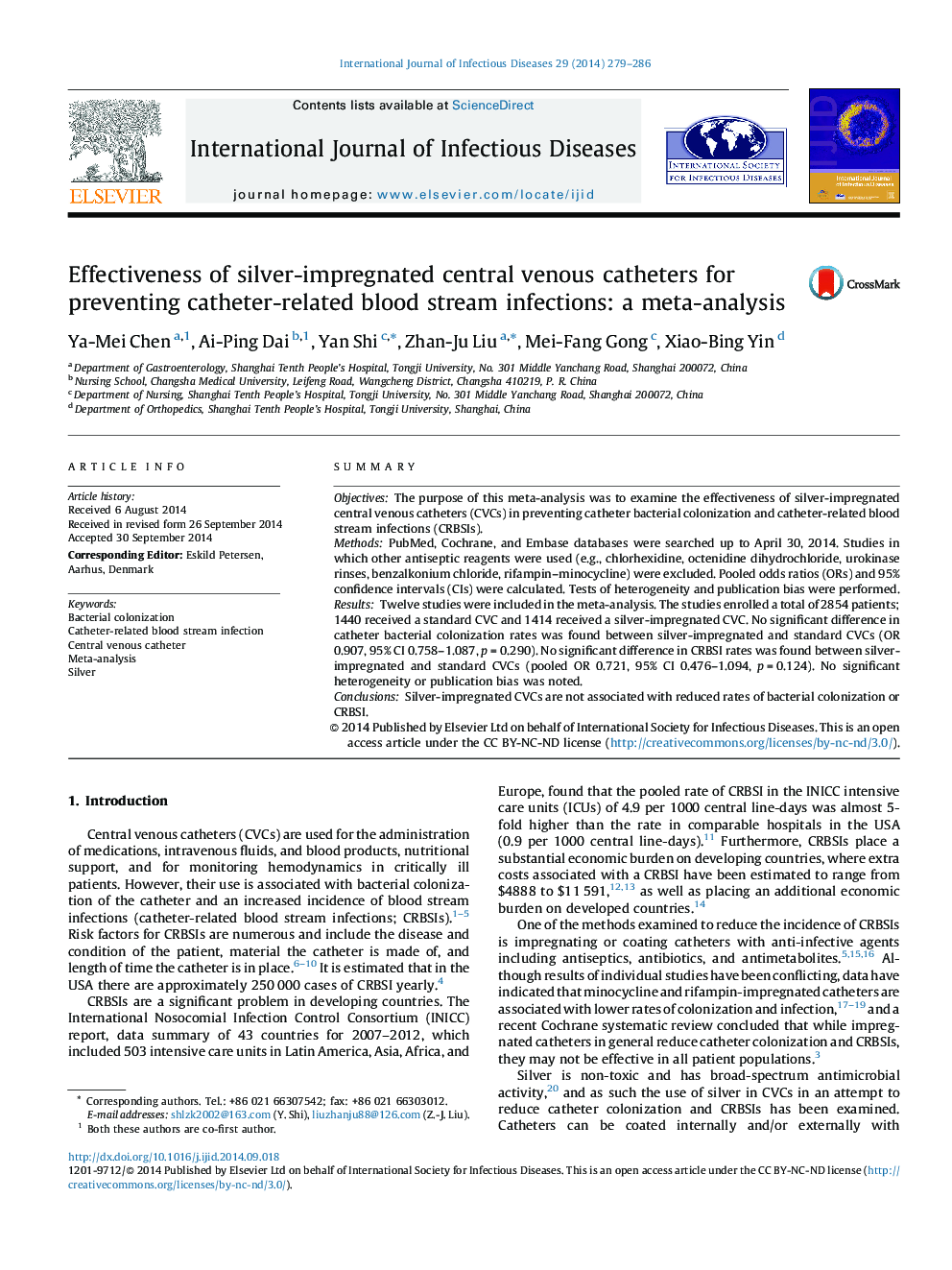| Article ID | Journal | Published Year | Pages | File Type |
|---|---|---|---|---|
| 3362352 | International Journal of Infectious Diseases | 2014 | 8 Pages |
•Catheter-related blood stream infection is associated with morbidity and mortality.•Silver-impregnated catheter may prevent catheter-related blood stream infection.•This meta-analysis included 11 randomized controlled trials and 1 cohort study.•Silver-impregnated catheter did not reduce bacterial colonization rates.•Silver-impregnated catheter did not reduce catheter-related blood stream infection.
SummaryObjectivesThe purpose of this meta-analysis was to examine the effectiveness of silver-impregnated central venous catheters (CVCs) in preventing catheter bacterial colonization and catheter-related blood stream infections (CRBSIs).MethodsPubMed, Cochrane, and Embase databases were searched up to April 30, 2014. Studies in which other antiseptic reagents were used (e.g., chlorhexidine, octenidine dihydrochloride, urokinase rinses, benzalkonium chloride, rifampin–minocycline) were excluded. Pooled odds ratios (ORs) and 95% confidence intervals (CIs) were calculated. Tests of heterogeneity and publication bias were performed.ResultsTwelve studies were included in the meta-analysis. The studies enrolled a total of 2854 patients; 1440 received a standard CVC and 1414 received a silver-impregnated CVC. No significant difference in catheter bacterial colonization rates was found between silver-impregnated and standard CVCs (OR 0.907, 95% CI 0.758–1.087, p = 0.290). No significant difference in CRBSI rates was found between silver-impregnated and standard CVCs (pooled OR 0.721, 95% CI 0.476–1.094, p = 0.124). No significant heterogeneity or publication bias was noted.ConclusionsSilver-impregnated CVCs are not associated with reduced rates of bacterial colonization or CRBSI.
